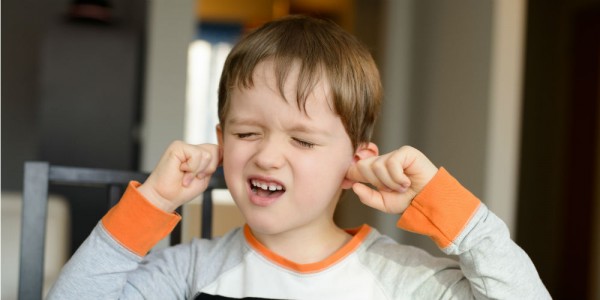Our story begins on April 3, 1996—the day we brought our then four-year-old son home from a Romanian orphanage. From the moment he came home, he was a whirlwind of hyperactivity— defiant, destructive, loud, violent, and full of rage.
I noticed some other strange behaviors right away. He would rock back and forth and from side to side, refuse to eat, and show a lack of eye contact. He had an apparent need to be in control of everyone and every situation, and a propensity to illicit angry responses from both me and my husband, or what we called “pushing our buttons.”
He had no fear of strangers, often just walking up to a stranger and touching them and talking to them. He would turn away when I would go for a hug and he flinched when I touched him, yet he would be happy to give hugs to anyone not in his immediate family.
I suppose the worst behaviors were the defiant ones—bossiness, arguing, and sassiness. No amount of behavior modification—sticker charts, etc.—worked with him. He just didn’t seem to learn from his mistakes. I read all the traditional parenting books and tried many different techniques. Sometimes, they would work for a small amount of time but inevitably, we would end up back at the beginning.
I started to think it was my fault, that maybe I wasn’t loving him enough or that I needed to give him more time and be more patient. By the time he went to kindergarten and then first grade, he was a constant behavioral problem.
An insightful teacher told me to check the internet for information on issues that international adoptees might face. That is when I stumbled across the Parents Network for Post Institutionalized Children. They had a very insightful newsletter that addressed the many issues that some international adoptees suffer from. I learned that attachment disorder can effect not only international adoptees, but children adopted domestically, foster children, and even biological children. There was a list of symptoms for reactive attachment disorder and at first, I was excited as I thought, okay, I’m not crazy; this is real. But the more I read the more frightened I became. It is a very serious illness and tough to recover from.
An important point to remember is that not all children who are adopted domestically, internationally, or children in foster care will have attachment disorder. The environment that these children lived in is a factor, but a lot of the issues can depend on the child’s temperament, strengths, weakness, etc.
I would never hesitate to adopt again despite our experience with attachment disorder. In fact, this past year we adopted a baby from Guatemala at four months old. I did notice a few signs of attachment problems—lack of eye contact and stiffening when being held—but this time, I was informed and could start working on the attachment process from day one.
It is logical to become as informed as you can about attachment problems, but don’t let it make you fear adoption or foster care.
Attachment is on a continuum from securely attached to severely unattached. Some children may suffer from attachment issues, some from mild attachment disorder and some from severe attachment disorder as in my son’s case. Children at any stage can benefit from treatment and therapeutic parenting, and should receive both to help them become securely attached.
Our son was diagnosed with reactive attachment disorder and we then had him screened for other disorders. Sensory Integration Disorder was one of the disorders that he received treatment for as well. It is very important to find out if your child suffers from other disorders that may exist in connection with reactive attachment disorder.
A neurologist then promptly diagnosed with ADHD. Our son takes Adderall for the ADHD and Wellbutrin for depression and anxiety. I fought the idea of giving him medication for a long time but the neurologist explained to me that my son’s brain did not develop normally due to the deprivation and lack of attachment he suffered in his early years and that the medication would help him. The doctor was correct.
Finally, we decided to find a therapist who specialized in attachment work. We had to travel three hours each way, but it was well worth having a therapist who knew how to help us.
We had the right kind of therapy in place for our son and then we had to learn therapeutic parenting. Typical parenting techniques do not work with children who have attachment disorder. We used the parenting techniques that are designed specifically for children with reactive attachment disorder. I also found a local support system and participated in an internet support group.
We started out with a boy who hated the world. A boy who couldn’t love, obey the simplest request, trust, or be joyful. We now have a child who laughs, hugs, loves, smiles, trusts, and can live within the boundaries we set for him—it is an amazing sight to behold. God is merciful.
Once you deal effectively with all of the pieces to the puzzle—the parenting, therapy, medication if needed, working with your child’s school, and taking care of yourself—you can create positive changes in your child.

